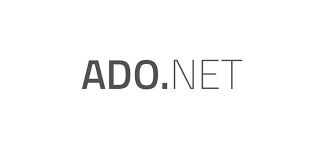
by Joche Ojeda | May 26, 2023 | ADO, ADO.NET, ORM
ORM is a technique for converting data between incompatible type systems using object-oriented programming languages. In the context of database management, an ORM provides a way to interact with a database using objects and methods, rather than writing raw SQL queries. This allows for a higher level of abstraction, reducing the amount of repetitive and error-prone code that needs to be written, and making it easier to maintain the application.
ORM and RDBMS
Object-Relational Mapping (ORM) tools and RDBMS have different approaches to querying data.
RDBMS uses SQL which is a low-level, language-agnostic query language that is used to communicate with relational databases. When using SQL, developers write raw SQL statements that are executed directly against the database. The results of the query are then returned in the form of a table or set of tables, which must be manually mapped to objects in code.
On the other hand, an ORM tool abstracts the underlying SQL code, allowing developers to query data using an object-oriented syntax that is similar to the programming language used in the application.
The ORM tool automatically generates the necessary SQL statements and executes them against the database, and then maps the resulting data to objects in code.
One of the main advantages of using an ORM tool is that it eliminates the need for manual data mapping, making it easier for developers to write data-access code and reducing the chances of errors. Additionally, because ORM tools use a higher-level syntax, they can also be more intuitive and easier to use than raw SQL.
However, ORM tools can also introduce performance overhead and complexity, as they must manage the mapping between the database and objects in code. In some cases, raw SQL may still be necessary to achieve the desired performance or to perform complex data manipulation that is not supported by the ORM tool.
As a simple example we will use the database table “customer”. It has four columns:
- id: A unique identifier for each customer, usually an auto-incrementing integer.
- name: The name of the customer, represented as a string.
- email: The email address of the customer, represented as a string.
- address: The address of the customer, represented as a string.
Each row in the table represents a single customer, and each column represents a piece of information about that customer. The table is used to store the data for the customer objects created in the code. The ORM maps the table to a class, allowing you to interact with the data using objects and methods.
Here is an example of how an ORM can map a database table named “customer” to a class representation in C#:
class Customer
{
public int Id { get; set; }
public string Name { get; set; }
public string Email { get; set; }
public string Address { get; set; }
}
// The ORM maps the customer table in the database to the Customer class.
// The columns of the table become properties of the class, and each row in the table becomes an instance of the class.
In this example, the ORM abstracts away the underlying database and provides a high-level, object-oriented interface for working with the data.
The main advantage of using an ORM (Object-Relational Mapping) instead of using the direct results from the database in C# is increased abstraction and convenience. This provides several benefits:
- Improved readability and maintainability: Code written using an ORM is easier to understand and maintain, as it uses a higher-level, object-oriented interface, rather than raw SQL.
- Reduced code duplication: With an ORM, you can encapsulate database-related logic in reusable classes and methods, reducing the amount of repetitive code that needs to be written.
- Increased safety: An ORM can help prevent SQL injection attacks by automatically escaping user input, ensuring that data is safely inserted into the database.
- Increased flexibility: An ORM provides a layer of abstraction between the application code and the database, allowing you to switch between different database systems without changing the application code.
Direct database access
var connection = new SqlConnection("connection string");
connection. Open();
var command = new SqlCommand("SELECT * FROM customers", connection);
var reader = command.ExecuteReader();
List < Customer > customers = new List < Customer > ();
while (reader. Read()) {
var customer = new Customer {
Id = reader.GetInt32(0),
Name = reader.GetString(1),
Email = reader.GetString(2),
Address = reader.GetString(3)
};
customers. Add(customer);
}
reader.Close();
connection. Close();
ORM access
var customers = ORM.Query<Customer>().ToList();
As you can see, using an ORM simplifies the code and makes it more readable, while also providing additional safety and flexibility benefits.
Different types of O.R.M
Micro O.R.M
A micro ORM is a type of Object-Relational Mapping (ORM) library that is designed to be lightweight and simple, offering a minimalistic and easy-to-use interface for interacting with a relational database.
Micro ORMs are typically faster and require less configuration and setup than full-featured ORMs, but also have fewer features and less advanced capabilities.
Micro ORMs provide a higher-level, object-oriented interface for working with databases, allowing you to interact with the data using classes, properties, and methods, rather than writing raw SQL queries as well but they typically offer a smaller, more focused set of features than full-featured ORMs, including support for basic CRUD (Create, Read, Update, Delete) operations, and often provide basic querying and data mapping capabilities.
Micro ORMs are often used in small projects or in environments where performance is critical. They are also commonly used in microservices and other architectures that prioritize simplicity, scalability, and ease of deployment.
Full-fledged Object-Relational Mapping (ORM)
A full-fledged Object-Relational Mapping (ORM) is a software library that provides a convenient and efficient way of working with relational databases.
A full-fledged ORM typically has the following characteristics:
- Object Mapping: The ORM maps database tables to object-oriented classes, allowing developers to interact with the database using objects instead of tables.
- Query Generation: The ORM generates SQL statements based on the object-oriented query syntax, reducing the need for developers to write and manage raw SQL.
- Data Validation: The ORM provides built-in data validation and type checking, reducing the risk of incorrect data being written to the database.
- Caching: The ORM may provide caching of data to improve performance, reducing the number of databases round trips.
- Transactions: The ORM supports transactions, making it easier to ensure that database operations are atomic and consistent.
- Database Independence: The ORM is typically designed to be database agnostic, allowing developers to switch between different database platforms without changing the application code.
- Lazy Loading: The ORM supports lazy loading, which can improve performance by loading related objects only when they are needed.
- Performance: A comprehensive ORM is crafted to deliver satisfactory performance, and we can customize each aspect of the ORM to enhance its performance. However, it is important to note that a solid understanding of how the ORM operates is necessary to make these customizations effective.
One of the disadvantages of using an Object-Relational Mapping (ORM) tool is that you may not be able to create specialized, fine-tuned queries with the same level of precision as you can with raw SQL. This is because ORMs typically abstract the underlying database and expose a higher-level, more object-oriented API for querying data.
For example, it may not be possible to use specific SQL constructs, such as subqueries or window functions, in your ORM queries. Additionally, some ORMs may not provide a way to optimize query performance, such as by specifying index hints or controlling the execution plan.
As a result, developers who need to write specialized or fine-tuned queries may find it easier and more efficient to write raw SQL statements. However, this comes at the cost of having to manually manage the mapping between the database and the application, which is one of the main benefits of using an ORM in the first place.
ORM and Querying data
Before the existence of LINQ, Object-Relational Mapping (ORM) tools used a proprietary query language to query data. This meant that each ORM had to invent its own criteria or query language, and developers had to learn the specific syntax of each ORM in order to write queries.
For example, in XPO, developers used the Criteria API to write queries. The Criteria API allowed developers to write queries in a type-safe and intuitive manner, but the syntax was specific to XPO and not easily transferable to other ORMs.
Similarly, in NHibernate, developers used the Hibernate Query Language (HQL) to write queries. Like the Criteria API in XPO, HQL was a proprietary query language specific to NHibernate, and developers had to learn the syntax in order to write queries.
This lack of a standardized query language was one of the main limitations of ORMs before the introduction of LINQ. LINQ provided a common, language-agnostic query language that could be used with a variety of data sources, including relational databases. This made it easier for developers to write data-access code, as they only had to learn one query language, regardless of the ORM or data source being used.
The introduction of LINQ, a new era for O.R.M in dot net
Language Integrated Query (LINQ) is a Microsoft .NET Framework component that was introduced in .NET Framework 3.5. It is a set of language and library features that enables developers to write querying and manipulation operations over data in a more intuitive and readable way.
LINQ was created to address the need for a more unified and flexible approach to querying and manipulating data in .NET applications. Prior to LINQ, developers had to write separate code to access and manipulate data in different data sources, such as databases, XML documents, and in-memory collections. This resulted in a fragmented and difficult-to-maintain codebase, with different syntax and approaches for different data sources.
With LINQ, developers can now write a single querying language that works with a wide range of data sources, including databases, XML, in-memory collections, and more.
In addition, LINQ also provides a number of other benefits, such as improved performance, better type safety, and integrated support for data processing operations, such as filtering, grouping, and aggregating.
using (var context = new DbContext())
{
var selectedCustomers = context.Customers
.Where(c => c.Address.Contains("San Salvador"))
.Select(c => new
{
c.Id,
c.Name,
c.Email,
c.Address
})
.ToList();
foreach(var customer in selectedCustomers)
foreach(var customer in selectedCustomers)
{
Console.WriteLine($"Id: {customer.Id}, Name: {customer.Name}, Email: {customer.Email}, Address: {customer. Address}");
}
}
And that’s all for this post, until next time ))
We are excited to announce that we are currently in the process of writing a comprehensive book about DevExpress XPO. As we work on this project, we believe it is essential to involve our readers and gather their valuable feedback. Therefore, we have decided to share articles from the book as we complete them, giving you an opportunity to provide input and suggestions that we can consider for inclusion in the final release. Keep in mind that the content presented is subject to change. We greatly appreciate your participation in this collaborative effort.
Related Articles
ADO The origin of data access in .NET
Relational database systems: the holy grail of data

by Joche Ojeda | May 24, 2023 | XPO
.NET communicates with a database using ADO.NET, which provides a set of classes and interfaces for accessing and manipulating data stored in a database.
ADO.NET supports various database systems, including relational databases and XML databases.
ADO.NET uses the following protocols to communicate with a database:
1. OLE DB (Object Linking and Embedding, Database) – This is a low-level, component-based API that provides a generic interface for accessing various types of data sources, including relational databases, spreadsheet data, and more.
2. ODBC (Open Database Connectivity) – This is a widely used API for accessing relational databases. It provides a standardized interface for accessing data, regardless of the underlying database management system.
3. ADO.NET Provider – This is a high-level, .NET-based API for accessing data stored in a specific database management system, such as Microsoft SQL Server, Oracle, or MySQL.
The choice of protocol used by ADO.NET to communicate with a database depends on the specific requirements of the application and the database management system being used.
The ADO.NET provider approach is the most common and provides a flexible and scalable solution for accessing and manipulating data stored in a database, supporting a wide range of database systems and communication protocols.
ADO.NET Main Components
The main classes in ADO.NET include:
1. Connection – Represents a connection to a database, providing methods for opening and closing a connection and for executing commands against the database.
2. Command – Represents a database command, such as a SELECT, INSERT, UPDATE, or DELETE statement, and provides methods for executing the command and for retrieving the results of the command.
3. DataReader – Provides a forward-only, read-only view of the results of a command. The DataReader is optimized for retrieving large amounts of data from a database, as it retrieves data in a streaming manner, rather than retrieving all data into memory at once.
4. DataAdapter – Represents a set of data commands and a database connection that are used to fill a DataSet and to resolve changes made to the data back to the database. The DataAdapter is often used in combination with a DataSet to provide a flexible and scalable way to access and manipulate data stored in a database.
5. DataSet – Represents an in-memory cache of data, providing a disconnected view of data that can be used to work with data independently of a database connection. The DataSet provides a rich set of features for manipulating and querying data, including support for relationships between tables, constraints, and transactions.
6. Parameter – Represents a parameter for a database command, providing a way to specify input values for a command, such as the values for parameters in a stored procedure.
These are the main classes in ADO.NET, and they provide a comprehensive and flexible set of tools for accessing and manipulating data stored in a database.
Design problems in ADO.NET 1
ADO.NET 1 refers to the first version of ADO.NET, which was introduced in .NET Framework 1.0, released in 2002. In this version of ADO.NET, data access was performed using direct methods and properties of the various ADO.NET classes, such as SqlConnection and SqlCommand for SQL Server.
The main design problem for ADO.NET 1 is that it requires developers to write database-specific code for each database management system that they wanted to access.
ADO.NET 2 and the DbProviderFactory
With the introduction of .NET Framework 2.0 in 2005, the ADO.NET DbProviderFactory was introduced.
The DbProviderFactory abstract class provides a set of methods for creating database-specific implementations of various ADO.NET classes, such as DbConnection, DbCommand, and DbDataAdapter, and makes it easier for developers to write database-agnostic code.
ADO.NET DbProviderFactory is a factory pattern that provides a standard way to create instances of database-specific classes, such as connection and command classes, in ADO.NET.
The DbProviderFactory is used by the ADO.NET data providers, such as the SqlClient data provider for SQL Server, the OleDb data provider for OLE DB data sources, and the ODBC data provider for ODBC data sources, to provide a common way to create instances of the classes that they implement. This makes it easier for developers to switch between different data providers and to write database-agnostic code that can work with different databases without modification.
The introduction of DbProviderFactory in ADO.NET was an exceptional milestone that revolutionized database access in .NET. By providing a standardized interface for creating database-specific connection objects, DbProviderFactory enhanced the flexibility and portability of data access code. Its ingenious design allowed developers to write data access logic without being tightly coupled to a specific database provider, thereby promoting code reusability and adaptability. This breakthrough was the steppingstone to the emergence and widespread adoption of Object-Relational Mapping Systems (ORMs).
ORMs leveraged DbProviderFactory’s capabilities to abstract the complexities of database interactions and map database entities to object-oriented representations seamlessly. As a result, developers could focus more on business logic and application development rather than dealing with low-level data access intricacies.
The symbiotic relationship between DbProviderFactory and ORMs continues to shape modern software development, empowering developers with powerful tools to efficiently manage and manipulate data in a database-agnostic manner.
Until next time ))
We are excited to announce that we are currently in the process of writing a comprehensive book about DevExpress XPO. As we work on this project, we believe it is essential to involve our readers and gather their valuable feedback. Therefore, we have decided to share articles from the book as we complete them, giving you an opportunity to provide input and suggestions that we can consider for inclusion in the final release. Keep in mind that the content presented is subject to change. We greatly appreciate your participation in this collaborative effort.
Related Articles
Relational database systems: the holy grail of data

by Joche Ojeda | May 23, 2023 | XPO
RDBMS stands for Relational Database Management System. It is a type of database management system that is based on the relational model, which organizes data into tables with rows and columns, and uses relationships between tables to link data together.
In an RDBMS, data is stored in tables, with each table representing a specific type of data (such as customers, orders, or products). Each table has columns that represent the attributes of the data, and rows that represent individual instances of the data. Relationships between tables can be established using keys, allowing data from multiple tables to be linked and retrieved in a single query.
RDBMSs provide a variety of features and tools for managing, querying, and manipulating data stored in the database, including data validation, constraint enforcement, transaction management, backup and recovery, reporting and analysis capabilities. They are widely used in enterprise applications, web applications, and other systems that require the management of large amounts of structured data.
Examples of popular RDBMSs include Oracle, Microsoft SQL Server, MySQL, and PostgreSQL.
A Relational Database Management System (RDBMS) uses Data Manipulation Language (DML) and Data Definition Language (DDL) queries to interact with the data stored in the database. The specific syntax of the queries will vary depending on the database system being used.
DML queries are used to retrieve, insert, update, and delete data in the database. The most used DML queries are:
- SELECT: Retrieves data from one or more tables in the database.
- INSERT: Adds a new row of data to a table in the database.
- UPDATE: Modifies existing data in a table in the database.
- DELETE: Deletes data from a table in the database.
DDL queries are used to create, modify, and delete database structures, such as tables, indexes, and constraints. The most used DDL queries are:
- CREATE: Creates a new database object, such as a table or index.
- ALTER: Modifies the structure of an existing database object.
- DROP: Deletes a database object.
For example, the following is a DDL query to create a table named customers:
CREATE TABLE customers (
id INT PRIMARY KEY AUTO_INCREMENT,
name VARCHAR(255),
email VARCHAR(255),
address VARCHAR(255)
);
And the following is a DML query to insert a new customer into the customers table:
INSERT INTO customers (name, email, address)
VALUES ('John Doe', 'johndoe@example.com', '123 Main St');
In the next article we will be talking about the origin of data access in net framework a.k.a ADO.NET
See you then )))
We are excited to announce that we are currently in the process of writing a comprehensive book about DevExpress XPO. As we work on this project, we believe it is essential to involve our readers and gather their valuable feedback. Therefore, we have decided to share articles from the book as we complete them, giving you an opportunity to provide input and suggestions that we can consider for inclusion in the final release. Keep in mind that the content presented is subject to change. We greatly appreciate your participation in this collaborative effort.

by Joche Ojeda | May 17, 2023 | AlchemyDotNet, C#
Alright, it’s time to start writing some code, but first, let’s decide how this project will be organized.
So far, the repository structure that I’ve found most appealing is the one I used for the SyncFramework (https://github.com/egarim/SyncFramework). Here is a representation with bullet points:
- Repo Folder: This is the parent folder that will contain all the code from our project. o Git Files: These are Ignore and attributes files.
- Clean.bat: This is a batch file that deletes all child BIN and OBJ folders to ensure our repository does not contain binary files (sometimes the ‘clean’ command from Visual Studio does not clear the outputs completely).
- CHANGES.MD: This is a Github markdown file that contains the history of changes in the code.
- README.MD: This is the landing page of the current repository where we can write some basic instructions and other important information about the project.
- src (folder): This is where the actual code resides.
Before I conclude this post, I want to discuss versioning. The main idea here is this: the project AlchemyDotNet.Core will start at version 1.0.0, and the version will change when there is a fix or an update to the core specification. We will only move to a new version like 2.0.0 when the specification introduces breaking changes. This means that we will be on version 1 for a very long time.
Link to the repo
https://github.com/egarim/Alchemy.Net
Previous posts
Alchemy Framework: 1 – Creating a framework for import data

by Joche Ojeda | May 15, 2023 | Uncategorized
Last Friday, I received a message from a dear friend and colleague, Pedro Hernandez. He asked me if I had the latest compiled version of the XPO import framework we created in our office. As it turned out, I did not have it readily available and had to search extensively for it.
While conducting this search across my computers, repositories, and virtual machines, I was inspired to create another import framework — yes, another piece of code to maintain.
Most of the time, my research projects begin in the same manner, typically after a conversation with my close friend Jose Javier Columbie. As always, he would say something like this: “Jose, do you think this can be possible? Why don’t you give it a try? If we succeed, that will be el batazo (like hitting a home run).”
In this specific case, that conversation didn’t happen. However, I could hear his words echoing in my mind.
Furthermore, I want this project to be community-driven, not just a technical experiment I have to maintain alone. I truly believe in the power of a community.
First Step
So, let’s begin. I’ll start with my favorite part: naming the project. I spent all weekend pondering this, attempting to condense the concept and associate it with a literary term or a Latin word (these are my preferred methods for naming a project).
Let’s define what the ultimate goal is. In an import process, the aim is to take information from a source ‘A’, translate or transform the information, and then store it in a target ‘B’.
Growing up, I was an avid reader – and I mean, I read a lot. (Now, I’ve switched to audiobooks.) Therefore, after defining what this project is about, naming it became incredibly easy.
noun
noun: alchemy
- the medieval forerunner of chemistry, concerned with the transmutation of matter, in particular with attempts to convert base metals into gold or find a universal elixir.
“occult sciences, such as alchemy and astrology”
Origin
late Middle English: via Old French and medieval Latin from Arabic al-kīmiyā’, from al ‘the’ + kīmiyā’ (from Greek khēmia, khēmeia ‘art of transmuting metals’).
The alchemy Framework
Alchemy is a framework created for DotNet, designed to import data from a data source to a data target. These sources and targets can be anything from a text file, CSV file, a database, ORMs, and so on.
The framework consists of a set of contracts, interfaces, and base classes. When implemented, these allow you to import and transform data between various sources and targets.
The requirement in a few words
As stated in the framework’s description, the requirement is only to define the contracts that represent the sources and targets, as well as a job configuration that describes how the information flows from one source to a target. The concrete implementations are not important at this point and should be discussed individually for each case.
The design patterns.
For this project, we will use the SOLID design principles and dependency injection. This will enable us to easily replace small functionalities, allowing us to mix and match different implementations depending on the data source and data target.




